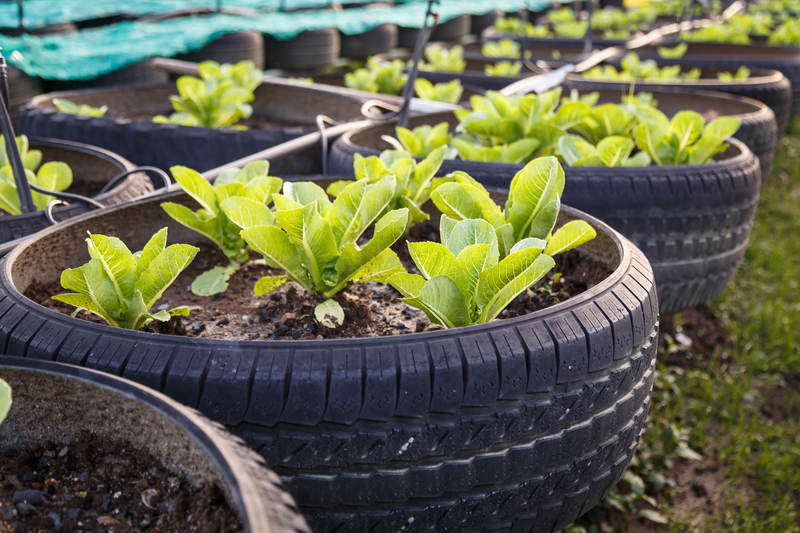Top Tips for Responsible PPE Waste Management at Home and Work
In today's world, PPE (Personal Protective Equipment) has become crucial for safety and hygiene, both at home and in the workplace. However, the increase in the use of masks, gloves, face shields, and gowns has also led to a remarkable surge in PPE waste. Proper PPE waste management is essential not just for our well-being, but also for ensuring we protect our environment from pollution and hazards associated with mismanaged disposal. In this in-depth guide, we'll outline the top tips for responsible PPE waste management at home and work, with practical advice, best practices, and solutions to make your efforts impactful.
Understanding PPE Waste: What is It and Why Does It Matter?
PPE waste comprises any personal protective equipment discarded after a single or limited use. This includes:
- Disposable face masks and respirators
- Latex, nitrile, or vinyl gloves
- Face shields and goggles
- Protective gowns and coveralls
- Shoe covers and head covers
The improper disposal of PPE waste can pose severe threats to public health, sanitation workers, wildlife, and the environment. For example, millions of disposable face masks have found their way into oceans and landfills since the onset of the COVID-19 pandemic, taking hundreds of years to decompose and leaching harmful microplastics.
The Importance of Responsible PPE Waste Management
Why should you care? Responsible PPE disposal helps:
- Prevent the spread of infectious diseases by limiting contaminated materials
- Protect sanitation workers from accidental exposure
- Reduce environmental pollution due to non-biodegradable materials
- Conserve resources by supporting recycling programs when available
- Encourage others to follow safe disposal practices

Common Types of PPE and Their Waste Challenges
Different PPE items require different disposal methods. Here's a quick look at the most commonly used types and their particular waste management challenges:
- Masks: Often made from plastics like polypropylene, making traditional composting or recycling difficult.
- Gloves: Latex, nitrile, and vinyl gloves are rarely recycled due to contamination risks and material limitations.
- Face Shields: These might contain mixed materials, complicating recycling efforts.
- Gowns and Coveralls: Typically single-use and made from synthetic fibers.
- Shoe Covers: Lightweight plastics that quickly accumulate in waste streams.
Top Tips for Responsible PPE Waste Management at Home
1. Designate a PPE Waste Bin
A key component of effective PPE waste management is using a dedicated bin for PPE waste. This keeps used masks, gloves, and other PPE separate from regular household garbage, reducing cross-contamination risks.
- Choose a lined bin with a lid to reduce odors and prevent accidental contact
- Place the bin near the door, bathroom, or entryway for convenient access
- Mark the bin clearly as "PPE Waste Only"
2. Double-Bag PPE Waste Before Disposal
Always double-bag used PPE waste to contain potential contaminants. This simple step can prevent accidental exposure for family members and sanitation workers.
- Use thick, leak-proof garbage bags
- Tie bags securely before placing them in the outside household waste bin
- Avoid squashing bags to reduce the risk of punctures
3. Never Flush PPE Down the Toilet
Flushing PPE such as masks or gloves can block plumbing and pollute waterways. Always opt for proper waste bins for disposal.
4. Minimize and Reuse When Possible
Reduce your impact by choosing reusable PPE where safe and practical, such as washable cloth masks and reusable goggles. Ensure all reusable PPE is thoroughly washed and disinfected between uses according to manufacturer instructions.
5. Practice Safe Handling
Before discarding any PPE, wash your hands thoroughly to prevent cross-contamination. If feasible, sanitize the exterior of the waste bag with a disinfectant before collection.
6. Educate Your Family and Visitors
Make sure all household members and guests know how and where to dispose of PPE waste responsibly. Clear signage and verbal reminders go a long way toward reinforcing these safety habits.
7. Stay Up-to-Date with Local Guidelines
Local municipalities may have specific rules for PPE waste disposal. Some areas may offer special PPE drop-off locations or hazardous waste bins. Always check your local government's website for the latest guidance.
Top Tips for Responsible PPE Waste Management at Work
Workplaces, especially those in healthcare, manufacturing, and retail, generate larger amounts of PPE waste. Managing this waste efficiently is not just good practice, it's often a legal requirement. Follow these top tips for safe PPE waste disposal at your business or facility:
1. Establish a PPE Waste Policy
Develop a written policy on PPE waste management. This should cover:
- Types of PPE used
- Proper collection and segregation procedures
- Disposal and recycling options
- Employee responsibilities
- Emergency spill response protocols
2. Provide Clearly Labeled PPE Waste Bins
Clearly labeled, designated bins throughout the workplace make it easier for employees to dispose of used PPE correctly, helping avoid contamination of general or recyclable waste.
- Use color-coding (e.g., red for biohazardous or infectious PPE waste)
- Post clear instructions and illustrations on proper disposal nearby
- Place bins at key locations: entrances, exits, break rooms, workstations
3. Train Staff Regularly
Ensure all employees are trained on PPE waste handling and disposal procedures. Regular refresher courses and visible reminders will help maintain high compliance rates.
4. Work with Licensed Waste Disposal Services
Partner with certified waste management companies that can handle infectious or hazardous PPE waste according to local regulations. They'll ensure safe collection, transport, and disposal, including incineration or other approved practices.
- Maintain records of waste manifests and transfer notes
- Confirm your provider uses environmentally safe disposal techniques
- Request periodic audits of your PPE waste management processes
5. Encourage Reduction and Reuse Where Possible
Whenever your risk assessment allows it, promote the use of reusable PPE (e.g., washable gowns, reusable face shields) and limit the use of disposables without compromising safety.
- Implement a PPE inventory management system to prevent over-ordering
- Track PPE usage to identify opportunities for reduction
6. Prevent Litter and Accidental Exposure
Never allow used PPE to accumulate on work surfaces or in inappropriate containers. Ensure regular collection and prompt disposal to minimize risks to cleaning staff and facility visitors.
7. Stay Compliant with Regulations
Laws surrounding PPE waste management can change rapidly, especially during public health emergencies. Appoint a compliance officer or assign responsibility to stay updated with the latest occupational health and safety (OHS) guidelines.
Environmental Impact of PPE Waste: Why It Can't Be Ignored
The unprecedented use of PPE during health crises like COVID-19 has created a global waste problem. Single-use PPE often contains plastics and toxic chemicals, which contribute to:
- Landfill overflow
- Soil and water pollution through microplastics
- Threats to marine and bird life, who may ingest or become entangled
- Release of toxic gases when incinerated improperly
Conscious PPE waste management is a critical step toward environmental sustainability and public health protection.
Innovative Solutions for PPE Waste Management
Forward-thinking companies and researchers are exploring ways to manage PPE waste more sustainably:
- Development of biodegradable PPE materials
- PPE recycling programs - some firms can now recycle masks and gloves into usable plastic products
- Community-based collection and safe processing of large PPE volumes
- Education campaigns to foster a culture of responsible waste management

Frequently Asked Questions: PPE Waste Management
Can I recycle disposable PPE?
Currently, most disposable PPE (especially those contaminated with biological material) is not recyclable through household programs. Some specialized companies offer recycling services for large volumes from workplaces.
What should I do if I see PPE litter in public?
Whenever possible, report it to local authorities or cleaning crews. Do not handle discarded PPE with bare hands to avoid exposure to potential pathogens.
Are biodegradable PPE products available?
Yes, some masks and gloves are now made with biodegradable materials. However, their adoption is still growing, and proper disposal practices remain essential.
How often should I empty the PPE waste bin?
At both home and work, empty bins daily or sooner if full to minimize the risk of contamination and odors.
Conclusion: Take Responsibility for PPE Waste Today
Practicing responsible PPE waste management at home and in the workplace is an essential habit for protecting personal health, workplace safety, and the well-being of our planet. By adopting the practical tips outlined above, educating others, and staying committed to best practices, every individual and organization can make a significant difference.
Start today: segregate, handle with care, minimize, and educate--because responsible PPE waste management goes beyond safety; it's about a sustainable future for all.
Together, we can build safer and cleaner environments at home, at work, and beyond.
